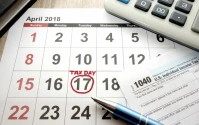Generated Title: Weather-Whisperers: How FIRO is Rewriting the Future of Water in California
The Dawn of Forecast-Fueled Resilience
Alright, folks, buckle up, because something truly revolutionary is happening in California, and it's all thanks to a technology that's as elegant as it is powerful: Forecast-Informed Reservoir Operations, or FIRO. Now, I know what you're thinking: "Another government acronym? Dr. Thorne, really?" But trust me, this isn't your run-of-the-mill bureaucratic program. This is a paradigm shift in how we manage one of our most precious resources, especially in a state as prone to both droughts and floods as California. We're talking about moving from reactive water management to proactive, forecast-fueled resilience.
The core idea? Using advanced weather forecasting – particularly around atmospheric rivers, those "rivers in the sky" that can either deluge or deprive us – to make smarter decisions about how we operate our reservoirs. Think of it like this: instead of driving by looking in the rearview mirror, we're finally getting a clear view of the road ahead.
It all centers around places like Lake Mendocino, where the old water control manuals, some dating back to the 1950s, were updated to incorporate FIRO principles. And let me tell you, the results are staggering. We're talking about thousands of acre-feet of water saved, enough to supply tens of thousands of households, without building new dams or pouring a single ounce of concrete, as Lynda Hopkins, chair of the Sonoma Water Board of Directors, put it. Imagine that! We're essentially creating water out of thin air – or, more accurately, out of better data and smarter algorithms.
Nick Malasavage, Operations & Readiness Division chief for the USACE San Francisco District, said it best: "Before this update, we would inevitably be required to release water to give airspace to the dam for the next storm regardless of the upcoming weather. FIRO allows us to be informed by the forecast and make better decisions." It's like having a crystal ball for water management.
And this isn't just theoretical. FIRO has been put to the test in both wet and dry years, proving its mettle time and time again. In 2020, one of the driest years on record, FIRO enabled a 19 percent increase in water storage at Lake Mendocino. That's not just a statistic; that's a lifeline for communities facing drought.

This success hinges on our improved ability to forecast atmospheric rivers. The Center for Western Weather and Water Extremes (CW3E) at UC San Diego is leading the charge with its Atmospheric River Reconnaissance Program. They're using everything from "Hurricane Hunter" aircraft to drifting buoys to gather data on these storms, feeding it into advanced weather models. The result? More accurate forecasts, and more informed decisions. It's like having a team of weather-whisperers decoding the secrets of the sky.
This reminds me of the early days of the internet. People were skeptical, they didn't understand the potential, but a few visionaries saw the future. FIRO is the internet of water management, a network of data, technology, and human ingenuity that's transforming how we interact with this essential resource. NOTEBOOK FEATURE: From forecast to flow: Optimizing California’s reservoirs with FIRO
But, as with any powerful technology, there are ethical considerations. We need to ensure that FIRO is implemented equitably, that it benefits all communities, and that it doesn't exacerbate existing inequalities. We also need to be mindful of the potential for unintended consequences and ensure that we're constantly monitoring and adapting our approach.
Still, the potential here is immense. FIRO is already being explored at other reservoirs across California, and it could be a game-changer for water management around the world. Imagine a future where we can predict and prepare for droughts and floods with unprecedented accuracy, where we can optimize our water resources to meet the needs of both people and ecosystems. It's not just a dream; it's a future that's within our reach.
When I first read about the details and how well it works, I was speechless. I was reminded why I got into this field in the first place.
A Future Where Water Bends to Our Will
The transition from reacting to water scarcity to predicting and preventing it is the real revolution. This isn't just about saving water; it's about building a more resilient, sustainable future for all of us. It's about using technology to solve some of our most pressing challenges, and it's about showing the world that a better future is possible.









